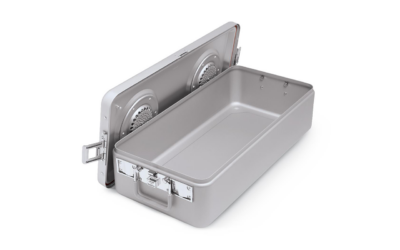
The global medical device sterilization market is expected to gain market growth in the forecast period of 2021 to 2028. Data Bridge Market Research analyses that the global medical device sterilization market is expected to reach $7.6 billion by 2028.
The global sterilization equipment market size was valued at $5.52 billion in 2020 and is expected to expand at a compound annual growth rate (CAGR) of 10.3% from 2021 to 2028, according to Grand View Research.
Hospital-acquired infections (HAIs), also known as nosocomial infections, are primarily found in patients receiving long-term treatment, mainly surgical treatment. They can occur in surgical centers, clinics, hospitals, ambulatory surgical centers, and long-term care facilities, such as nursing homes and rehabilitation centers. Generally, the geriatric population, children and patients with low immunity are prone to HAIs. Factors such as the use of catheters, lack of proper hygiene in health care settings, and excessive use of antibiotics can increase predisposition to HAIs, the report adds.
An increase in the prevalence of HAIs due to the lack of sanitation and preventive measures is a key factor anticipated to propel market growth over the forecast period. According to a report by the Centers for Disease Control and Prevention (CDC) in 2018, around 1.7 million cases of HAIs and around 99,000 associated deaths are reported each year in American hospitals. As per a report published by the European Centre for Disease Prevention and Control (ECDC), in 2018, the prevalence of HAIs in the European countries was around 7.1%. It also reported that around 4.1 million patients suffer from HAIs in Europe each year. Such cases are expected to increase the demand for sterilization equipment. Sterilization equipment is required for sterilization and cleaning of different equipment used in the hospitals as they help in preventing infections and reducing the spread of diseases.
An increase in the incidence of chronic diseases, such as diabetes, cancer, and other autoimmune diseases, is anticipated to boost the demand for sterilization equipment, Grand View Research states. Antimicrobial resistance increased adoption of unhealthy and sedentary lifestyles, smoking and alcohol consumption are some of the major factors contributing to the growing prevalence of chronic diseases. According to the National Diabetes Statistics Report 2017, by the CDC, more than 100 million people in the U.S. were living with diabetes or prediabetes. In addition, the WHO reported that in 2015, approximately 1.6 million global deaths were directly caused due to diabetes. Cancer has been a global health care burden. According to the estimates of the WHO, cancer is the leading cause of death globally and almost 1 in 6 deaths can be attributed to this disease. In addition, it reported that over 70% of cancer-related deaths typically occur in middle- and low-income countries.
The rising prevalence of chronic conditions has significantly increased the hospital admission rate. Blankets, sterile fluids and equipment are some of the essential requirements in hospitals and clinics. Thus, in such cases, sterilization equipment efficiently serves the purpose as they reduce the risk of infection transmission among patients and improve care delivery, Grand View Research explains. Thus, the increasing prevalence of chronic diseases is expected to positively impact the market growth during the forecast period.
Low-temperature sterilizers held the largest share of 31.97% in 2020, according to Grand View Research. The increasing need for sterilization of heat- and moisture-sensitive medical equipment with complex designs is propelling the need for low-temperature sterilization. This technique involves ethylene oxide (EtO) sterilization, hydrogen peroxide gas plasma and sterilization using other liquid chemical substances. Low-temperature sterilization techniques have been evolving over the decade owing to the changing health care environment and complex innovations. In addition, the use of expensive, complex and delicate medical instruments that are difficult to sterilize is spurring the demand for low-temperature sterilization.
Factors such as increasing surgical procedures, the expanding patient population, rising life expectancy, and the unmet need for sterilization of complex substances are driving the low-temperature sterilizers segment, according to Grand View Research.
“There is a constant need for R&D due to the risks associated with various sterilants, which prompts manufacturers to make constant efforts, leading to the launch of new products. Some critical aspects of low-temperature sterilization, such as target specificity and toxicity, create a need for advancements in current chemicals available for sterilization. Therefore, these factors are contributing to the growth of this segment over the forecast period,” the report states.









